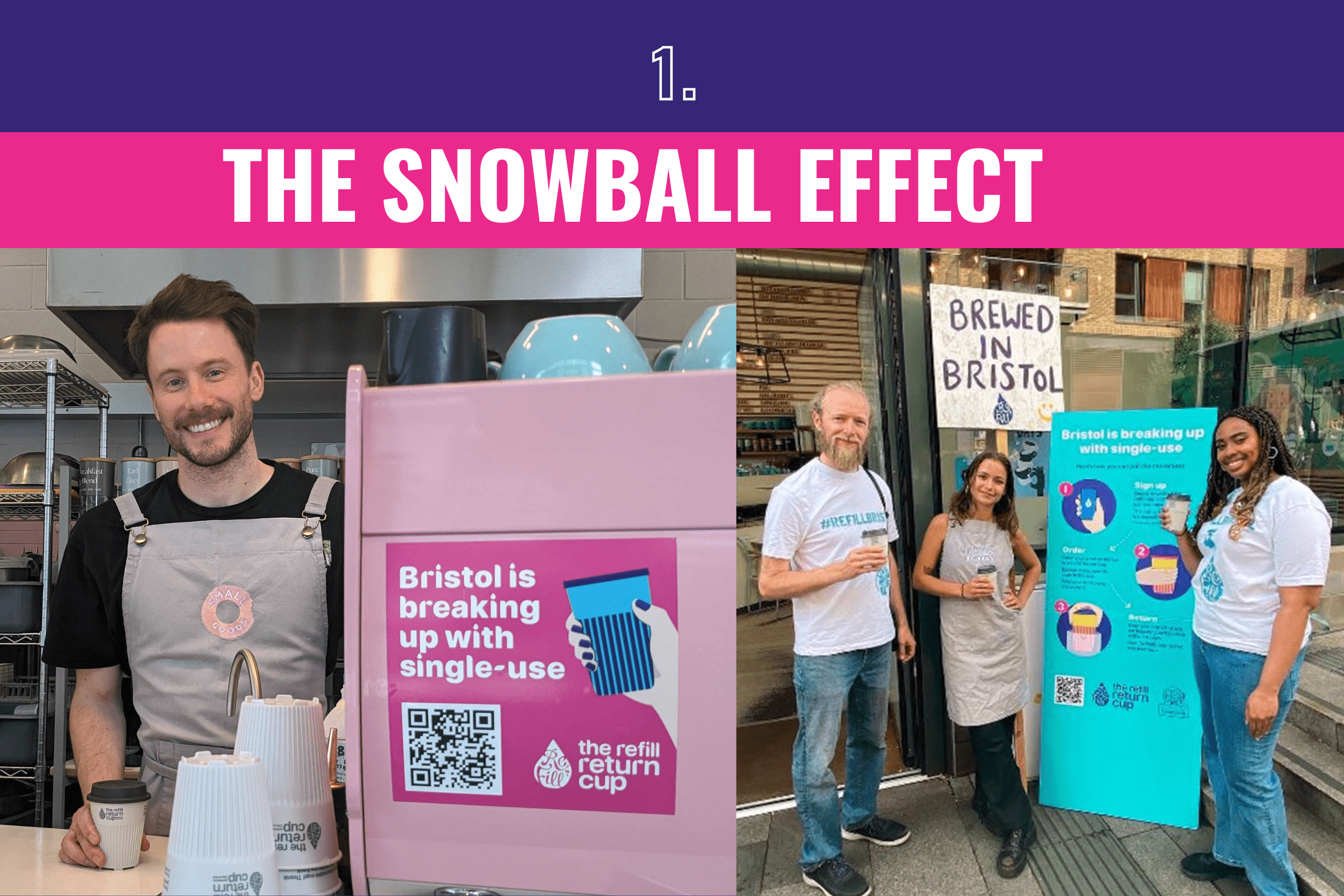Making Reuse Second Nature

key steps to drive behaviours for Return systems
In October, as part of Circular Economy Week #CEWeek24 organised by ReLondon, City to Sea organised a free webinar, to share our learnings and insights from our own reuse projects. We wanted anyone watching now or in the future to learn from our journey, as we aim to change behaviours towards return and reuse systems.
Thank you so much to everyone who joined, we were delighted to see that tickets were all booked after only 24 hours! This just shows how important consumer behaviours are and confirms the need for the circular economy ecosystem to share our information and insights to bring about the positive change.
The insights we delved into:
- We shared some key considerations for anyone looking to design or integrate a reuse system and drive behaviour change with their audience. This is based on learnings from the 2 returnable systems we are currently working on.
- We also focused in on a case study of our returnable coffee cup scheme, looking at the challenges we’ve faced, interventions we have implemented and the impact they had.

2 RETURN SCHEMES PROJECTS IN THE SPOTLIGHT
The webinar focused on return systems, more specifically return on the go schemes. In return systems, the packaging is owned and cleaned by a business (or group of businesses). Consumers effectively rent the packaging (whether that’s a coffee cup, a laundry bottle, a beauty product container) and return it when it’s empty so that it can be cleaned, refilled and put back on the shelf to be used again… and again!
Over the past 2 years, we have been developing and supporting two return systems:
- a borrow and return cup scheme for coffee outlets – Refill Return Cup
- a returnable packaging solution for consumer goods in supermarkets – Reposit returnable packaging
The Refill Return Cup project has been active in both open environments including independent coffee shops in Bristol and in Cardiff, and in semi-closed environments such as at the universities of UWE and Bath Spa.
The second project is part of a cross-sector collaboration supported by Innovate UK, and lead by the company, Reposit, in collaboration with City to Sea, M&S and Ecover. Shoppers effectively can buy existing products they already love in packaging they can return after use, either in participating stores or by freepost using the Reposit web app. Behind the scenes, the empty container is then collected, cleaned and put back to use to reduce packaging waste! The system is live in M&S stores for homecare products, and ecommerce beauty and personal care brands like Beauty Kitchen and Arran Sense of Scotland.
CHANGE THE PERCEPTION, CHANGE THE GAME
When we designed or collaborated on these return systems, we started with research methodologies, conducting interviews with staff and customers to check pre-conceptions and mental barriers of such schemes.
The 4 main sticking points we discovered, were that people thought it would be either complicated, expensive, they wouldn’t understand the benefits of taking part, or they would have pre-determined concerns over cleanliness.
Communication is a key tool in tackling these mental barriers to change them.
4 STEPS TO MAKE A START

STEP 1: THE SNOWBALL EFFECT
Without huge marketing budgets, most people learned about return and reuse schemes directly at a venue.
Creating a compelling value proposition that is customer-centric and focused on the customer benefit can drive trials from your first adopters.
- Build exposure and grab attention: attention span is often very low, same as for any other products, standing out on shelves through multiple touchpoints is key.
- Be money wise: It doesn’t have to be cheaper, but the key is to focus on the benefit and be upfront about the value proposition, consider it as a primary messaging.
- Make the impact relatable: Communicate that you’re reducing packaging waste in terms that resonate with people. Either by taking an “ultra local approach” or using very simple terms and analogies.

STEP 2: MAKE IT EASY. NO, REALLY.
Show how easy it is: Communication should focus on how purchasing products in reusable containers is an easy way to reduce single-use plastic. Include anything that can help minimise the mental or physical effort to take part, whether that’s video display, standardised icons or colour recognition, show your customers how easy it is to participate in the return or reuse scheme.

STEP 3: THE EFFECT OF SOCIAL PROOF
Return systems are people powered. Staff are your trusted messengers. They are the ones who will engage directly with customers, help promote the project, product or service, and do some troubleshooting along the way to make the experience frictionless.
We need to inspire them too as they may also be your customers, especially in supermarkets!

STEP 4: RETURN IS THE KEY BEHAVIOUR
It may be obvious but returnable packaging needs to be returned. Over and over and over again. Communication efforts should really embed this at every touchpoint possible
Incentivise returns with rewards, or with the idea that they will get penalty fee if they don’t return their item. For example, for Refill Return Cup the return rate increased from 80% to 98% when we introduced a penalty fee for non-returned cups.
People don’t necessarily need to know the ins and outs of the return logistics, but we found that sharing simple information and reassuring people that something will happen to the product, that it won’t get discarded when they bring back the empty packaging is valued and drives them to take part.
Want to know more?
If you’d like more information about the case study or understand how City to Sea can support you and your organisation to integrate refill, reuse and return into your operations, please get in touch with here. Get in touch with us here.

